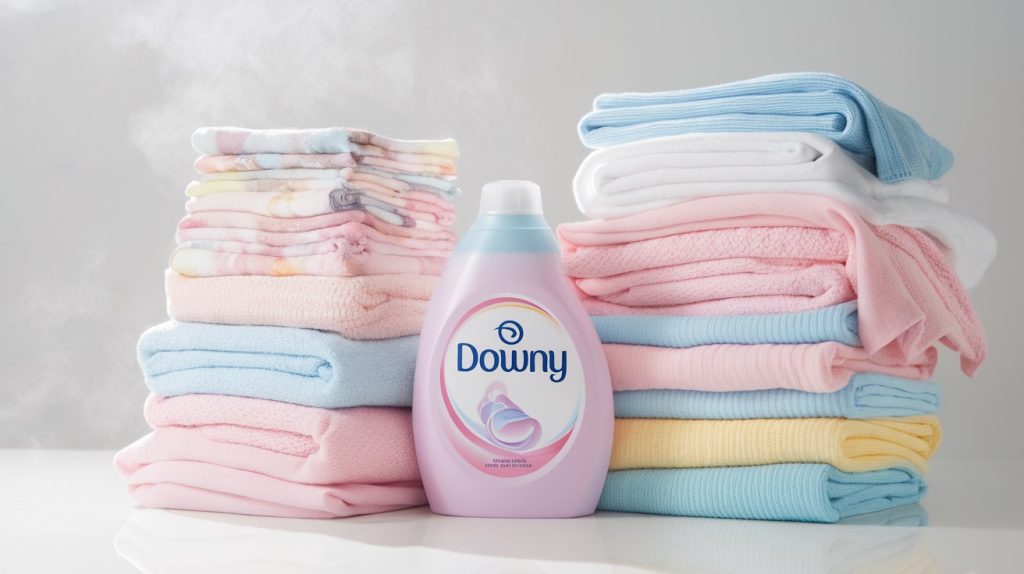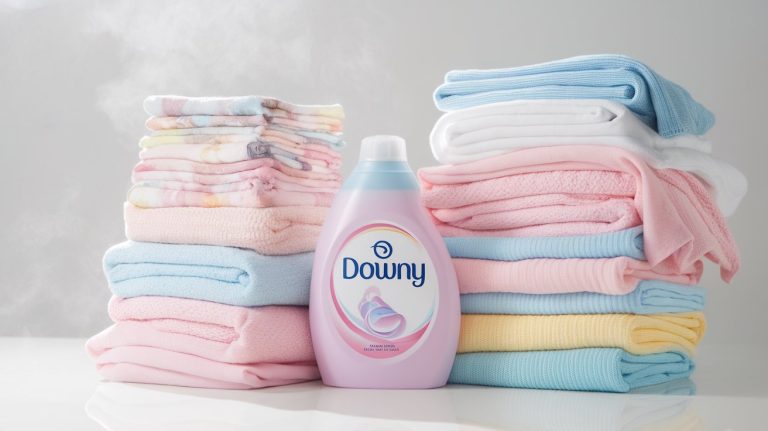Downy fabric softener is designed to soften clothes, reduce static, add a long-lasting fragrance, and prevent wrinkles. Many people use it in their laundry routine without thinking much about what’s actually inside. However, for those concerned about ingredient safety, environmental impact, or potential skin sensitivities, understanding what makes Downy work is crucial.
This guide provides a detailed breakdown of every ingredient in Downy fabric softener, their functions, and how they impact fabric care.
Table of Contents

Complete List of Downy Fabric Softener Ingredients and Their Functions
1. Water – The Base of the Formula
Water is the primary ingredient in Downy, acting as a carrier for all other ingredients. It keeps the softener in a liquid state, allowing for easy mixing, pouring, and even distribution during the rinse cycle.
2. Diethylester Dimethyl Ammonium Chloride – The Fabric Softening Agent
This is the active ingredient responsible for softening fabrics and reducing static cling. It is a cationic surfactant, which means it carries a positive charge that helps it bond to negatively charged fabric fibers. This process:
- Coats fabric fibers, making them feel softer and smoother.
- Reduces static cling, preventing clothes from sticking together.
- Helps fabric retain shape and texture over time.
3. Fragrance – The Source of Downy’s Scent
Downy’s signature fresh scent comes from a blend of synthetic and natural fragrance compounds. Some of the key fragrance ingredients include:
- Linalool – Floral, lavender-like scent.
- Limonene – A citrus-based fragrance for freshness.
- Benzyl Acetate – Sweet, fruity scent commonly found in jasmine.
- Citronellol – A rosy scent similar to geranium.
- Coumarin – Warm, vanilla-like scent.
These fragrances are often microencapsulated, meaning they are released gradually over time, keeping clothes smelling fresh for longer.
4. Polyquaternium-33 – The Anti-Wrinkle Agent
Polyquaternium-33 is a polymer that helps prevent wrinkles and fabric wear by coating fibers, making them more flexible. This reduces creased fabrics after washing and drying.
5. Formic Acid – The pH Stabilizer
Formic acid regulates the pH balance of Downy, preventing it from breaking down over time. This helps:
- Maintain product effectiveness.
- Prevent residue buildup in washing machines.
- Keep the formula stable for long-term use.
6. Polyoxyalkylene Substituted Chromophores (Blue and Red) – The Dyes
These dyes give Downy its distinct blue or red color, making it visually recognizable. They do not affect fabric color when used correctly in the wash.
7. Pentasodium Pentetate – The Chelating Agent
This ingredient binds to metal ions in hard water, preventing them from interfering with the effectiveness of the fabric softener. This helps:
- Improve performance in hard water conditions.
- Reduce mineral buildup in washing machines.
Why Does Downy Fabric Softener Get Thick?
Over time, you might notice that your Downy fabric softener has become thick and difficult to pour. This can happen for several reasons:
1. Exposure to Air
When the bottle is left open, some of the water in the formula evaporates, making the softening agents more concentrated and thicker.
2. Cold Temperatures
Fabric softeners contain quaternary ammonium compounds, which can solidify or thicken when stored in cold conditions. If your laundry room is cold, the softener may turn into a gel-like consistency.
3. Age of the Product
Older fabric softeners may separate or thicken over time, especially if they have been sitting for months or years without use.
4. Hard Water Interaction
When mixed with hard water, Downy may react with minerals like calcium and magnesium, causing it to thicken or form clumps.
How to Fix Thickened Downy Fabric Softener
If your Downy fabric softener has thickened, here’s what you can do:
- Warm It Up – Place the bottle in warm water for 10-15 minutes.
- Dilute with Water – Mix one part warm water with two parts fabric softener and shake well.
- Shake Before Use – This helps redistribute any settled ingredients.
What Happens If You Use Too Much Downy?
Using too much fabric softener can lead to several issues that affect both clothing quality and washing machine performance.
1. Residue Buildup on Clothes
Excess Downy leaves behind a waxy coating, reducing the absorbency of towels and athletic wear. Clothes may start to feel greasy or sticky.
2. Skin Irritation and Allergies
Fragrances and softening agents can leave residues on clothes, leading to skin irritation, itching, or allergic reactions, especially for those with sensitive skin.
3. Clogging in Washing Machines
Too much Downy can accumulate in washing machine dispensers, hoses, and filters, leading to:
- Mold and mildew buildup.
- Reduced washer efficiency.
- Musty odors in the machine.
4. Overpowering Scent
Since Downy uses microencapsulated fragrances, using too much can result in a strong, lingering scent that may be overwhelming.
How to Avoid Using Too Much Downy
- Follow the Recommended Amount – Use the correct cap-fill line as instructed.
- Dilute Before Use – If necessary, mix Downy with a little water before adding it to the machine.
- Use Every Other Wash – Especially for towels and synthetic fabrics, using fabric softener less frequently prevents buildup.
Final Thoughts
Downy fabric softener is formulated with carefully selected ingredients that improve the softness, freshness, and longevity of fabrics. However, it is important to use it correctly to avoid issues such as thickening, buildup, or skin irritation.
Related Articles:

